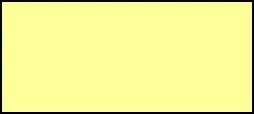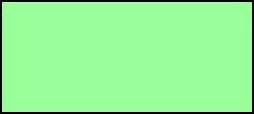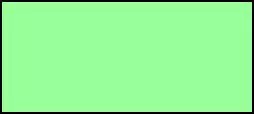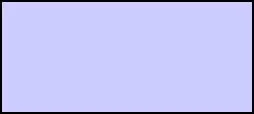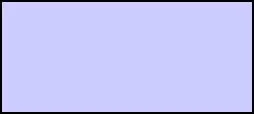Science Jeopardy
Explore the world of reproduction, heredity, and adaptations in this exciting science Jeopardy hosted by the HMS 7th Grade Science Teachers. From asexual to sexual reproduction, gene basics to phenotypes, and more, test your knowledge and learn about traits and genetic makeup through engaging questions and answers. Discover the fascinating processes that shape living organisms and their characteristics in this educational game.
Download Presentation

Please find below an Image/Link to download the presentation.
The content on the website is provided AS IS for your information and personal use only. It may not be sold, licensed, or shared on other websites without obtaining consent from the author.If you encounter any issues during the download, it is possible that the publisher has removed the file from their server.
You are allowed to download the files provided on this website for personal or commercial use, subject to the condition that they are used lawfully. All files are the property of their respective owners.
The content on the website is provided AS IS for your information and personal use only. It may not be sold, licensed, or shared on other websites without obtaining consent from the author.
E N D
Presentation Transcript
Science Jeopardy Hosted by the HMS 7th Grade Science Teachers Reproduction Heredity Adaptations All Mixed Up All About Traits 100 200 100 200 100 200 100 200 100 200 300 300 300 300 300 400 400 400 400 400 500 500 500 500 500 Final Jeopardy
A-100 ANSWER: A reproductive process that involves only one parent and the offspring is identical to the parent. QUESTION: What is Asexual reproduction Answer Question
A-200 ANSWER: A type of Asexual reproduction in which one cell divides into 2 identical cell. Occurs in Prokaryotic cells. QUESTION: What is Binary Fission Answer Question
A-300 ANSWER: The reproductive process that involves 2 parents that each contribute a combination of genetics to form a new organism different from themselves. QUESTION: What is Sexual Reproduction Answer Question
A-400 ANSWER: A type of Asexual reproduction in which an offspring grows out of the parent organism. QUESTION: What is Budding? Answer Question
A-500 ANSWER: The best way to produce an organism with the desired traits you want (like brown fur or floppy ears) QUESTION: Selective Breeding Answer Question
B-100 ANSWER: The basic physical and functional unit of heredity made up of DNA. DNA is found here. QUESTION: What is Gene? Answer Question
B-200 ANSWER: The physical appearance of an organism QUESTION: What is Phenotype Answer Question
B-300 ANSWER: Having two different alleles for a trait. QUESTION: What is Heterozygous Answer Question
B-400 ANSWER: The process of characteristics being passed down from parent to offspring. QUESTION: What is Heredity? Answer Question
B-500 ANSWER: The genetic makeup of an organism. QUESTION: Genotype Answer Question
C-100 ANSWER: Process by which Usable or Favorable traits are passed down and less favorable traits become less common or nonexistent. QUESTION: Natural Selection Answer Question
C-200 ANSWER: Movement of organisms to a different geographical or climate region where food is more available. QUESTION: What is Migration Answer Question
C-300 ANSWER: A slowed physiological state of an organism to survive long periods of cold temperatures or reduced food supply. QUESTION: What is Hibernation? Answer Question
C-400 ANSWER: The main adaptation developed by the Galapagos Finch which happened through Natural Selection. QUESTION: What is the beak size? Answer Question
C-500 ANSWER: A process by which an organism or population becomes better suited to its habitat QUESTION: What is Adaptation? Answer Question
D-100 ANSWER: If blue eyes are a dominant trait represented by a B and brown eyes are a recessive trait represented by b then what eye color would the offspring have if the alleles are Bb. QUESTION: What is Blue eyes? Answer Question
D-200 ANSWER: The offspring of an Asexual organism are QUESTION: Genetically identical to the parent. Answer Question
D-300 ANSWER: Having two of the same alleles for a single trait (FF or ff) QUESTION: What is Homozygous Answer Question
D-400 ANSWER: Are found in the nucleus of a cell. Contain the genes which contain the DNA QUESTION: What is chromosomes? Answer Question
D-500 ANSWER: Crickets communicate with other crickets by chirping. Crickets who cannot make a sound are less likely to find a mate and reproduce. For this reason, there are few crickets that cannot make sound. This is an example of QUESTION: What is Natural Selection? Answer Question
E-100 ANSWER: A capital letter is used to represent this kind of trait. QUESTION: What is a Dominant Trait? Answer Question
E-200 ANSWER: All of these are inherited traits EXCEPT: Blue Eyes, Blond Hair, Widows Peak, and Throwing a ball QUESTION: what is throwing a ball? Answer Question
E-300 ANSWER: Recessive traits are able to be visible if QUESTION: A recessive trait is received from both parents for a single trait. Ex: ff or bb Answer Question
E-400 ANSWER: A characteristic of an organism. QUESTION: What is a Trait Answer Question
E-500 ANSWER: The genetic traits of an organism are determined by QUESTION: inherited genes from both the mother and father Answer Question
FINAL JEOPARDY ANSWER: Why do most birds have an adaptation of Hollow Bones? QUESTION: (Answers may vary) To help them be lighter weight so as to have better flight. Answer Question








